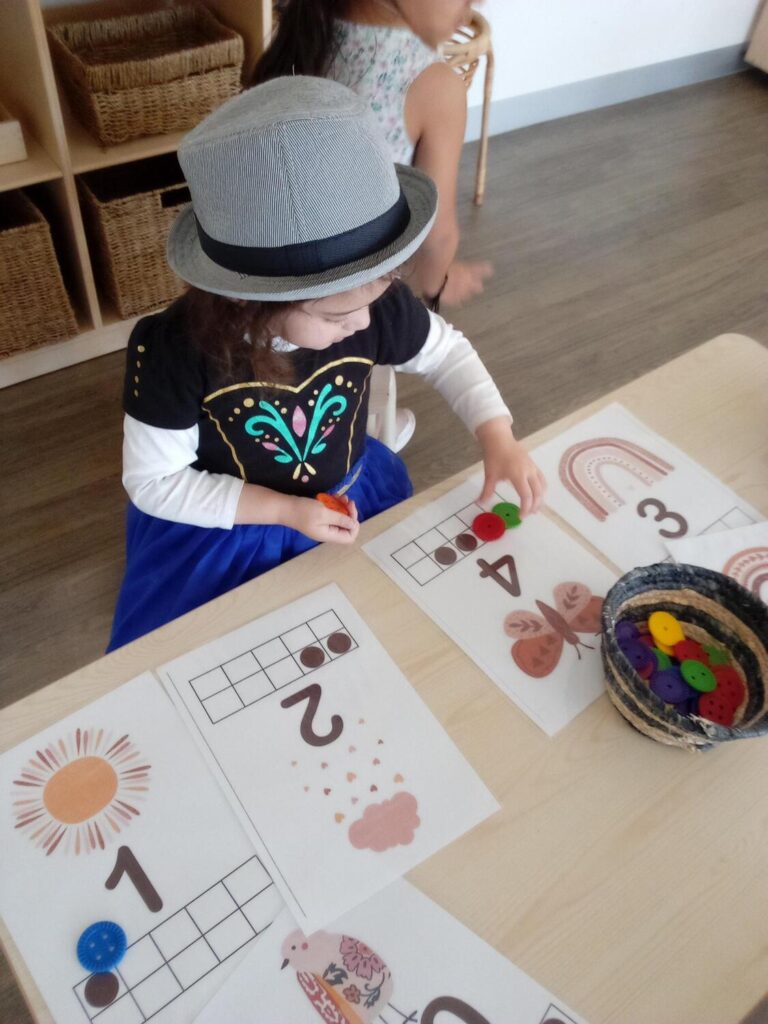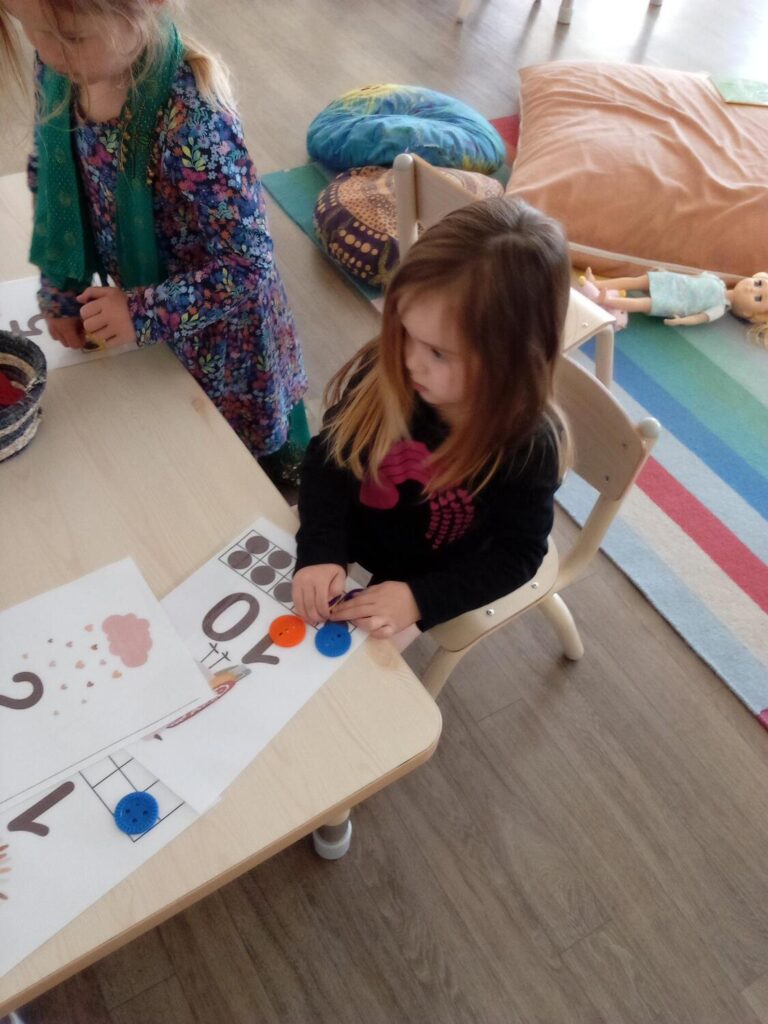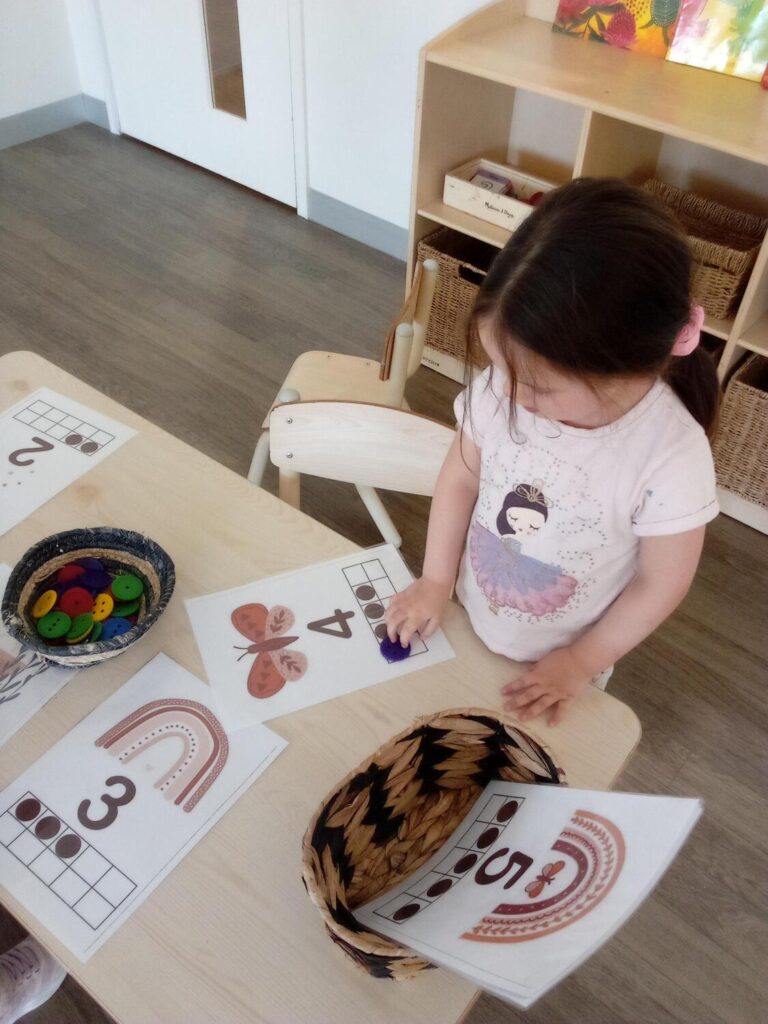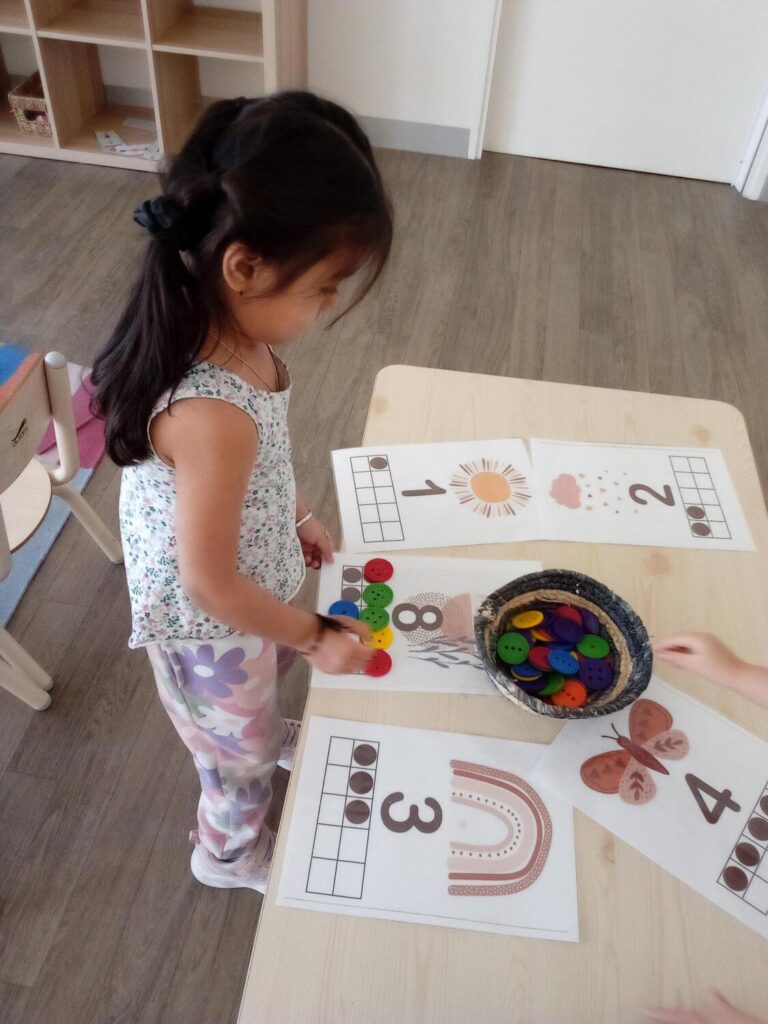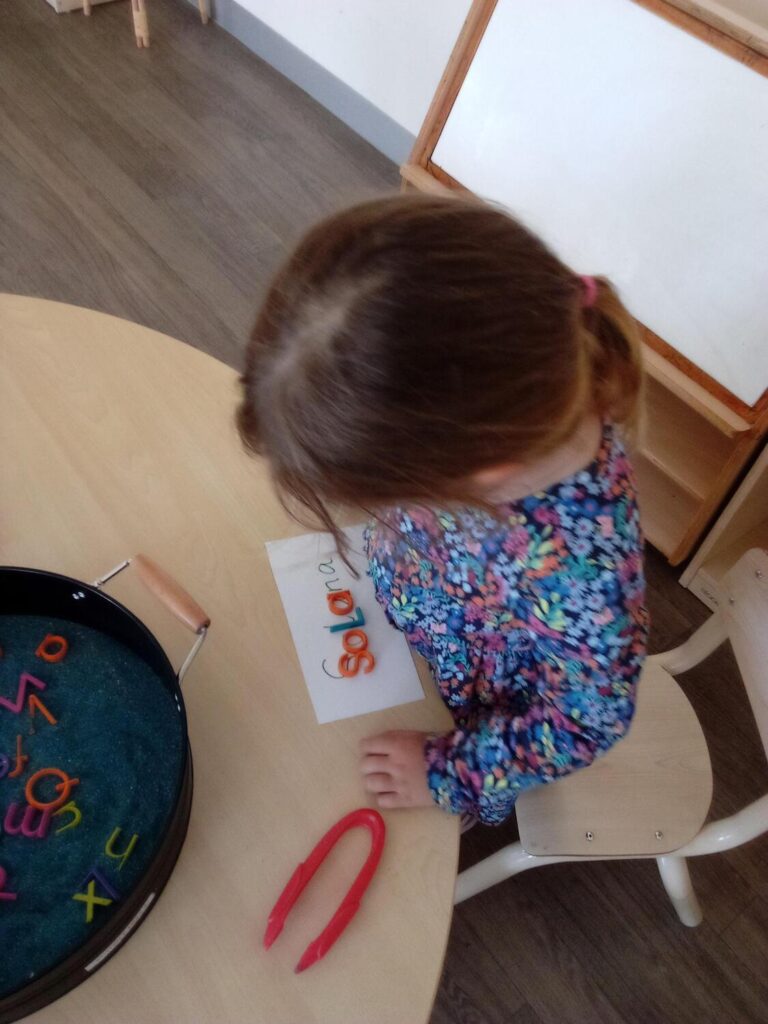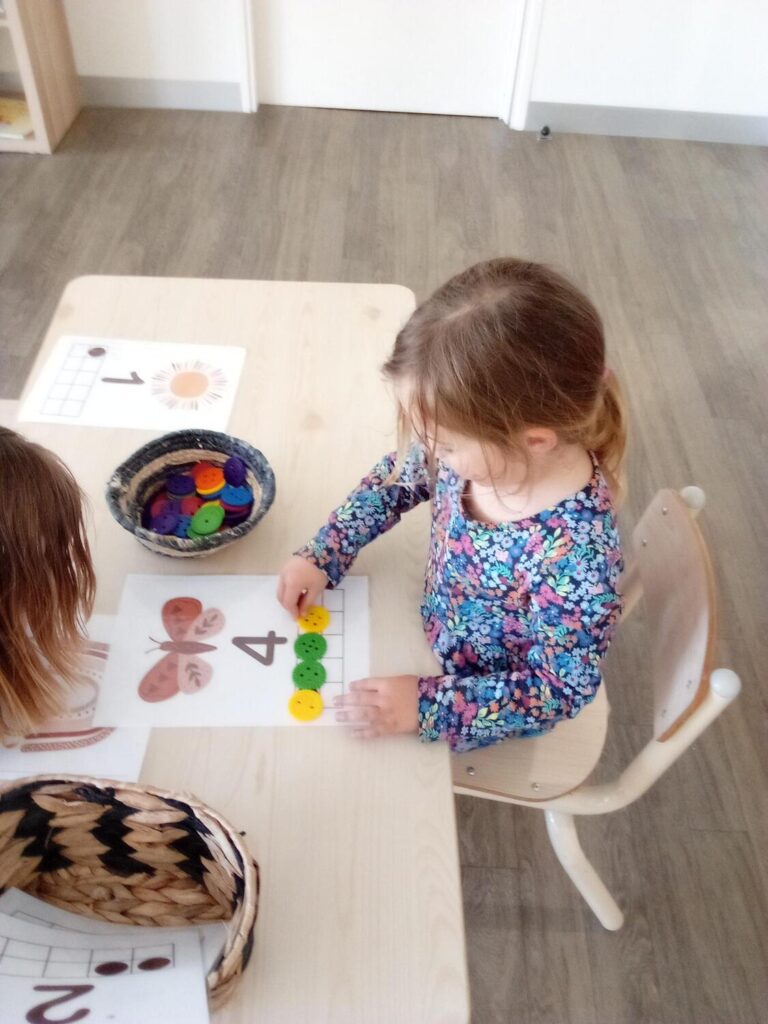Today in our garden, an exciting discovery sparked the children’s curiosity!
While exploring, they found several lizards hiding under leaves. Their interest quickly turned into an impromptu counting activity as they eagerly counted the number of lizards they could spot.
Following their enthusiasm, we decided to extend this interest into a fun, hands-on counting activity using toy bugs and buttons.
Inside, we set up a table with a variety of different pictures and colourful buttons. The children were invited to identify the number on the picture and then match the correct number of buttons to each group. As they sorted and counted, we noticed that they were not only working on their number recognition but also developing their problem-solving skills.
Analysis of learning
- Number Recognition: The children showed increasing confidence in identifying numbers as they matched the correct quantity of buttons to each group. Some children were able to count up to 10, while others worked on counting smaller numbers, which helped reinforce number recognition at their own pace.
- Problem Solving: Some bugs were large and others small, and this led to discussions about size and the best way to arrange them to make counting easier. The children experimented with lining up the bugs or grouping them together, demonstrating critical thinking and problem-solving strategies.
- Fine Motor Skills: Handling the bugs and buttons encouraged the development of fine motor skills as children carefully placed each item in its correct spot.
- Social Interaction: Throughout the activity, the children shared their discoveries and supported one another in counting. It was wonderful to see them collaborating and learning from each other in a fun and engaging way.
Reflection:
The counting activity was a successful extension of the children’s natural curiosity and interest in their environment. By incorporating familiar elements with a counting challenge, we were able to build on their prior knowledge in a meaningful way.
The activity encouraged both independent exploration and group collaboration, providing a rich opportunity for problem-solving and skill development.
